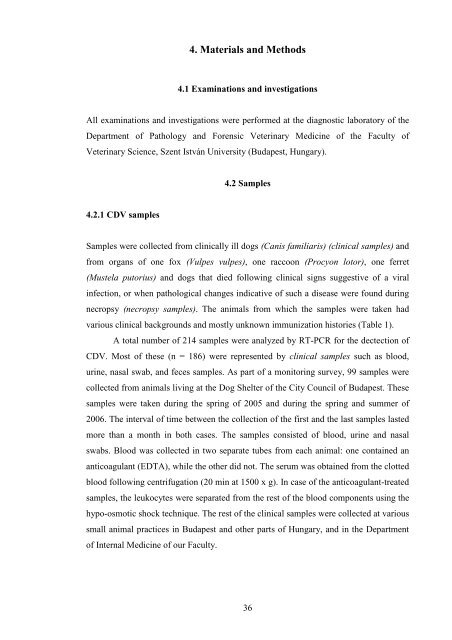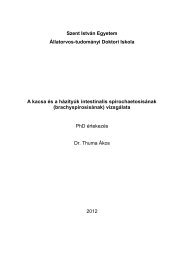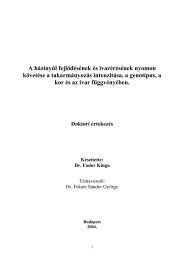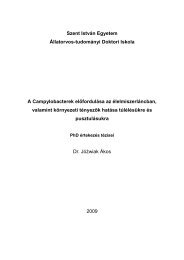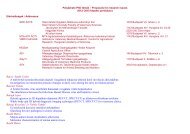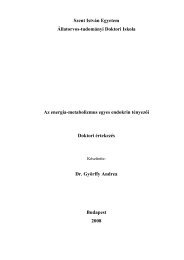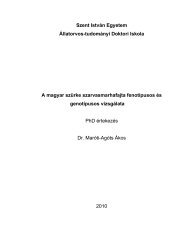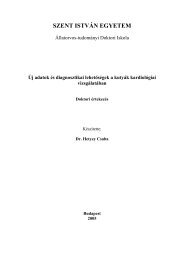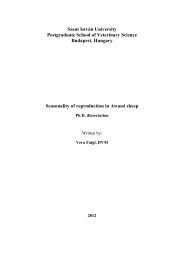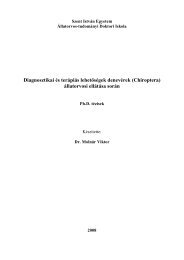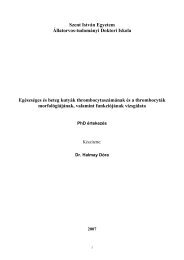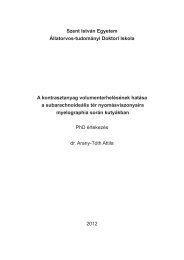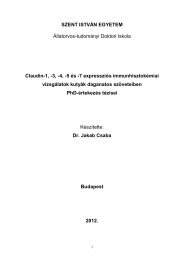PhD Thesis Demeter Zoltan
PhD Thesis Demeter Zoltan
PhD Thesis Demeter Zoltan
Create successful ePaper yourself
Turn your PDF publications into a flip-book with our unique Google optimized e-Paper software.
4. Materials and Methods<br />
4.1 Examinations and investigations<br />
All examinations and investigations were performed at the diagnostic laboratory of the<br />
Department of Pathology and Forensic Veterinary Medicine of the Faculty of<br />
Veterinary Science, Szent István University (Budapest, Hungary).<br />
4.2.1 CDV samples<br />
4.2 Samples<br />
Samples were collected from clinically ill dogs (Canis familiaris) (clinical samples) and<br />
from organs of one fox (Vulpes vulpes), one raccoon (Procyon lotor), one ferret<br />
(Mustela putorius) and dogs that died following clinical signs suggestive of a viral<br />
infection, or when pathological changes indicative of such a disease were found during<br />
necropsy (necropsy samples). The animals from which the samples were taken had<br />
various clinical backgrounds and mostly unknown immunization histories (Table 1).<br />
A total number of 214 samples were analyzed by RT-PCR for the dectection of<br />
CDV. Most of these (n = 186) were represented by clinical samples such as blood,<br />
urine, nasal swab, and feces samples. As part of a monitoring survey, 99 samples were<br />
collected from animals living at the Dog Shelter of the City Council of Budapest. These<br />
samples were taken during the spring of 2005 and during the spring and summer of<br />
2006. The interval of time between the collection of the first and the last samples lasted<br />
more than a month in both cases. The samples consisted of blood, urine and nasal<br />
swabs. Blood was collected in two separate tubes from each animal: one contained an<br />
anticoagulant (EDTA), while the other did not. The serum was obtained from the clotted<br />
blood following centrifugation (20 min at 1500 x g). In case of the anticoagulant-treated<br />
samples, the leukocytes were separated from the rest of the blood components using the<br />
hypo-osmotic shock technique. The rest of the clinical samples were collected at various<br />
small animal practices in Budapest and other parts of Hungary, and in the Department<br />
of Internal Medicine of our Faculty.<br />
36


